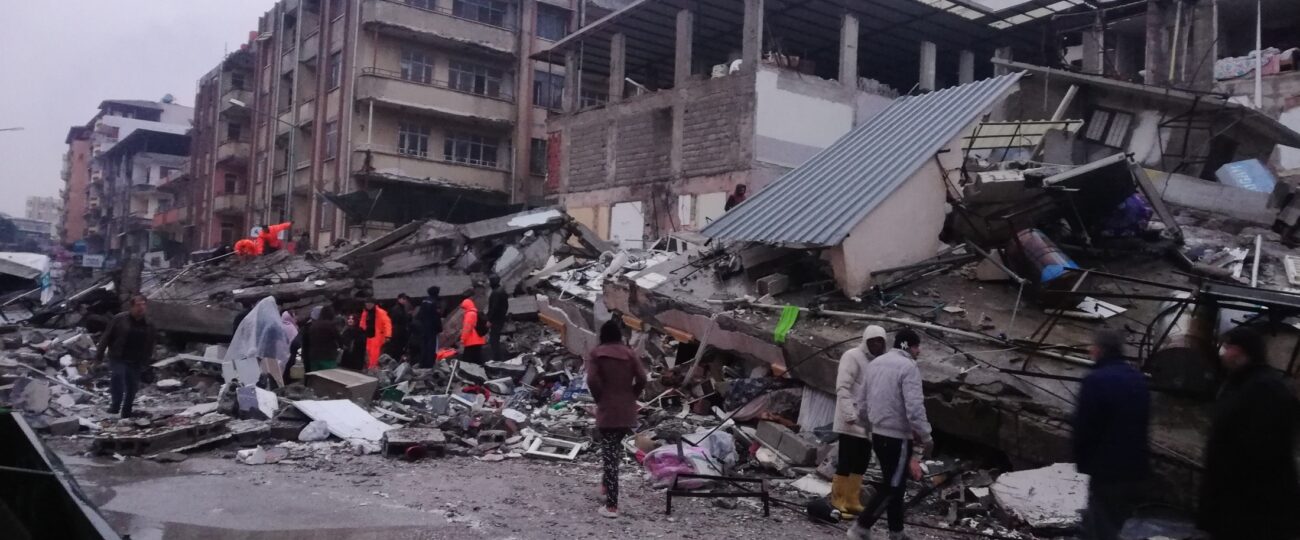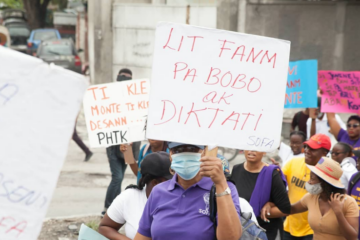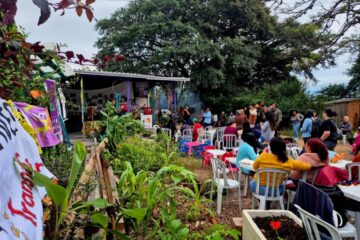Learning about experiences of grassroots feminist reconstruction from different territories allows us to formulate collective starting points and ways to reorganize life in face of extreme climate events. These extreme events are part of the current model of reproduction, production, and consumption under the system of multiple oppressions, and they aggravate the capital-life conflict. Through women’s collective organizing, we establish practices and initiatives that are centered around solidarity to ensure the sustainability of life under harsh conditions. The webinar “Experiences of Feminist Reconstruction After Environment Disasters” featured women from Brazil, Haiti, Cuba, and Turkey sharing experiences of reconstruction. Across these territories, we combine practices of reconstruction and feminist solidarity with a political agenda that tackles the dynamics of capital expansion. This webinar was held on September 29th and was organized by Capire in partnership with Brazilian organizations that are members of the World March of Women, SOF Sempreviva Feminist Organization and CF8 March 8 Feminist Center. Read below the contribution by Nilgün Aşkar of the Health Care Workers’ Union [Sağlık Emekçileri Sendikası — SES] from Turkey.
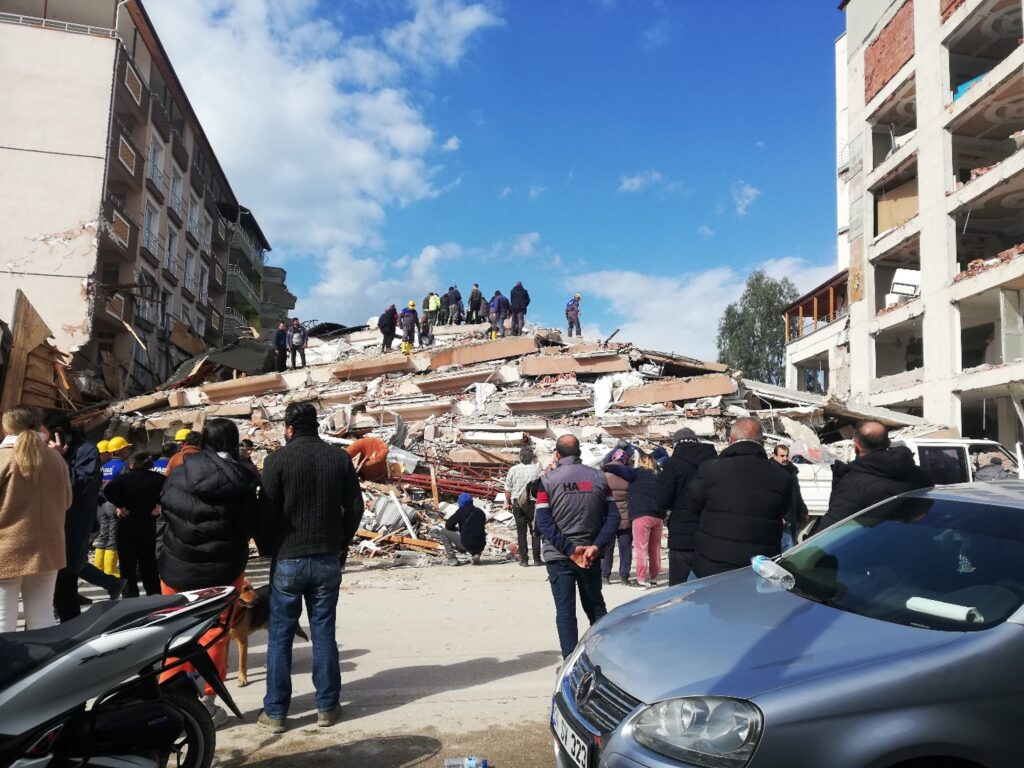
The earthquake in Antakya was called the disaster of the century. The biggest destruction happened in Hatay, and because the very critical help that was supposed to arrive in the first few days didn’t arrive, we actually call it the negligence and massacre of the century. In Turkey, usually the official numbers aren’t very accurate so we don’t believe in the numbers that were announced by the State. Besides, the earthquake has impacted men or women or children differently. I am from the Union of Health Laborers, and I was able to observe how women went through the most serious problems.
What was the impact on women in the first days? While the women were trying to survive, they were also looking for pads, they were looking for where to be able to give birth, they were looking for protective spaces and shelters. There was an obligation of intervening very quickly on the issues of pregnancy or basic hygiene care items. The State officials didn’t arrive and there wasn’t a quick help offered by the government.
Solidarity networks were established by the local people. On them, women from different backgrounds were essential as they were able to understand what could be the necessities of the woman who survived the earthquake. They would approach the woman and whisper in their ears whether they needed for example underwear. For the local women, it wasn’t easy to announce their needs when they were next to the male members of their communities.
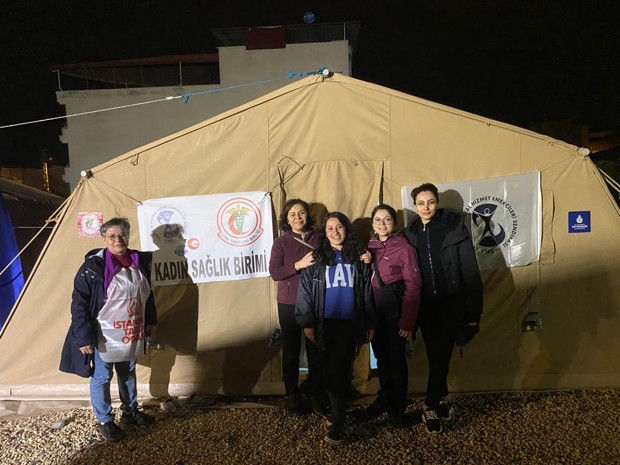
The hygiene needs of women weren’t met, so there were serious urinary infections, and other general health problems. The women going through these kinds of health issues also had some difficulty expressing them and accessing relevant medication. They felt helpless having to deal with this in a situation in which there was also no electricity, no water, very limited internet and other limitations.
Because of all that, there were an urgent need for establishing tents as spaces for care, for the necessities of the elderly, of the disabled, of the sick people or for the issues of daily necessities like hygiene and personal care. When it was realized that it wasn’t easy to fulfill the necessities of women, a special tent called Women’s Health Unit was created. Still, the women making a queue weren’t able to mention some of their necessities. For example, they weren’t able to mention their necessities regarding reproductive health, such as condoms or birth control pills. We were dealing with victims of sexual violence and there was still rape under those conditions, which is why they really badly such those items.
These necessities were mainly met by the women from within those solidarity networks. We created protected spaces where women could sit inside and talk about these issues. It was a necessary effort to open up space for them to be able to mention what was happening or accept that they needed those items. We had defined a central place in order to fulfill those needs, but some women didn’t have vehicles or the men were the ones with the cars for transport. There was a need for getting at more remote places. So we started providing these services and support via mobile units together with the women and the trade unions, the Health Workers Union, and women’s organizations.
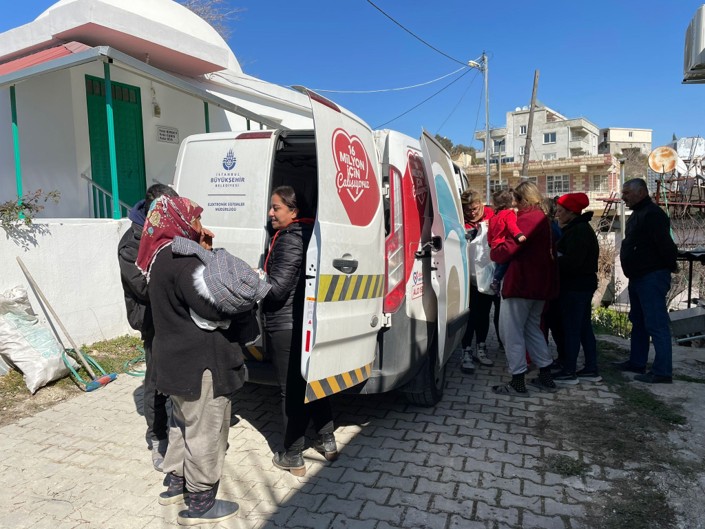
Women struggled with the access of the public space, and didn’t feel safe under their conditions. It was hard to go outside because there were so many people from outside their communities. The bathrooms were placed 100 meters away from the shelters and late at night women didn’t feel safe to go to those places. We warned the official institutions in order to find solutions to this kind of problem. Some people were trying to kidnap their children and there were real possibilities of abuse, which did happen.
Women who were exposed to violence needed referrals, and we were doing those because the official services normally offered by the municipality didn’t function back then. Those women were referred to other cities, trying to make it possible that different kinds of services could be offered to those who were exposed to violence. We had to prepare brochures and send notifications, because the usual functioning mechanisms for abuse or domestic violence wasn’t functioning. We had the responsibility of informing these women about possible ways of denouncing abuse or violence situations.
Some activities had to do with the relationship between the women and their kids. In such terrible conditions, we were able to observe that women were with their children not knowing what to do with them or not knowing how to relate to their own children. Trying to guide them through how they could find different ways of establishing relationships, we carried out certain activities with children, and we talked with women about how their children could be affected from disasters such as this earthquake.
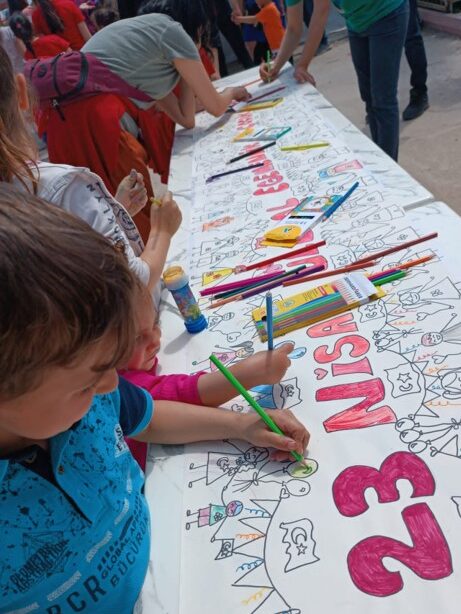
Temporary houses were built around the second month after the earthquake. These were too close to each other, which meant no privacy for the families that were hearing each other all the time. The children had to be limited, kept inside and quiet. Of course, these duties, and responsibilities were on the shoulders of women.
While they were going through all of these problems, women were actually looking for possible solutions. They were looking for possible ways of alternatives, of a different and new life after gaining awareness of the concerns regarding children, privacy, and the high level of stress within their households. They were thinking about possible ways of coming up with answers, and we started forming groups. Within one month, we had already constituted psychosocial support groups.
Together, they were able to discuss both the daily and domestic violence they went through. If there were cases of violence or abuse, we were able to open up these spaces so that possible ways of intervention could be discussed. They were able to discuss possible ways of healing, finding solutions or changes, establishing new routines. Through collectiveness, and by sharing our personal experiences, the burden of shame regarding the low hygiene conditions became less heavy. Together, it was also easier to define their demands and take them to the relevant authorities.
These women took active roles on possible ways of supporting other women who were in their situations. There was this solidarity network established by women’s organizations and I can say that it was really powerful. While women were establishing this new life, they started beautifying their spaces, planting flowers. We build our March 8th action here, and build a very big demonstration on the day 40 after the disaster. During the same time, in Syria there were issues of kidnapping of Alevi women, from which we build a solidarity demonstration. Together with the World March of Women, different actions and demonstrations are still being organized.
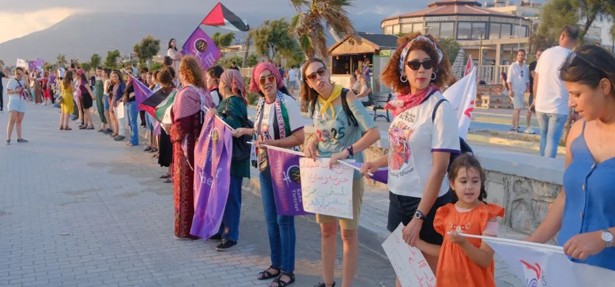
With routines and more occasions of coming together, it was possible to discuss a lot of issues, heal each other in these spaces. On one day, when we said goodbye to our deads. People didn’t know how to hold their own grief, so we carried out a ritual which was at the same time a rebellion, we can say.
Lots of groups were building different struggles: about asbestos, about dust, about environmental issues, gender based violence. Women took active roles and as a result of all of these different activities and actions some permanent structures were also formed like women’s life centers, women’s cooperatives and separate organizations that offered women’s health services. Some of the mechanisms that were established are still ongoing, and through these mechanisms women were able to gather even more strength.
Under the pretext of expropriation, people’s territories, even the ones under titles or deeds, were taken from them. Olive and orange trees in hundreds of hectares were expropriated. The women were pioneers in the struggle against the expropriation of their private registered land. They were raising their voice within these struggles in order to express what they said no to, what they didn’t want and what were their demands.

